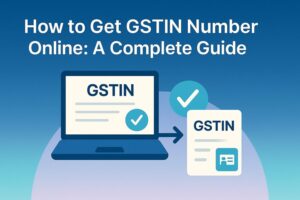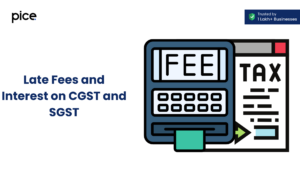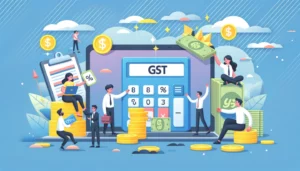GST ITC Set Off Rules 2025: New Guidelines
- 12 Nov 25
- 7 mins
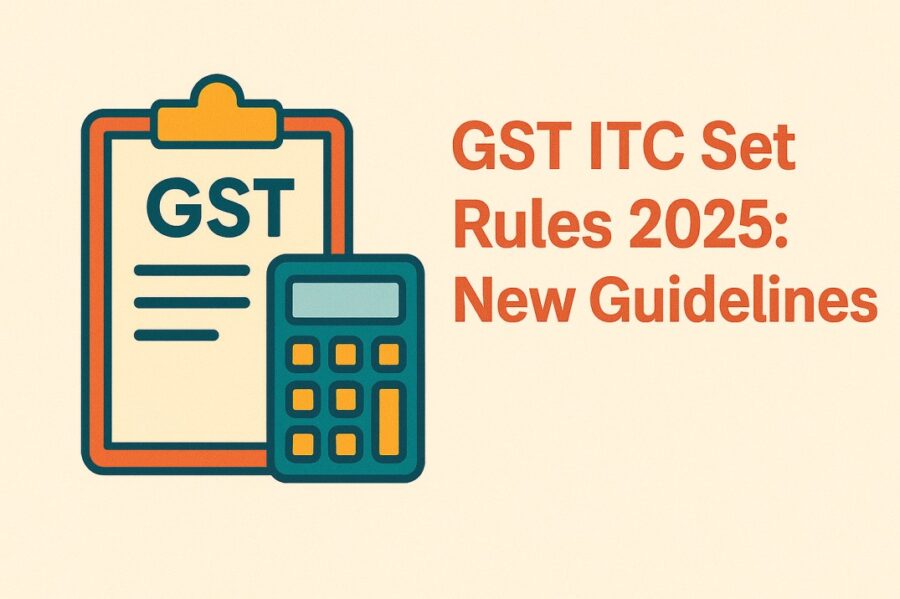
GST ITC Set Off Rules 2025: New Guidelines
Key Takeaways
- New GST ITC set-off rules (2025) mandate using IGST credit first before adjusting against CGST and SGST liabilities.
- Section 49(5) and Rule 88A of the CGST Act simplify ITC utilization, ensuring balanced distribution between Centre and States.
- Businesses can only use 99% of ITC to offset GST liability; at least 1% must be paid in cash, with a few exemptions.
- Accurate invoice matching between GSTR-1 and GSTR-3B is essential to claim valid ITC and avoid compliance penalties.
- Proper ITC tracking and reconciliation improve cash flow, reduce tax costs, and enhance GST compliance efficiency.
Are you optimising your GST credits in 2025? With more than ₹2.3 lakh crore availed as Input Tax Credit (ITC) every year, even the slightest deviation in the GST ITC set off rules can have a noteworthy impact on working capital. T
he recent changes are intended to facilitate ease of compliance, but also introduce fresh challenges for companies. Familiarizing yourself with these amended set-off rules is the key to continued compliance and credit maximisation.
Let us understand what is new and how you can adjust confidently.
GST Set Off Rules (CGST Amendment Act, Section 49)
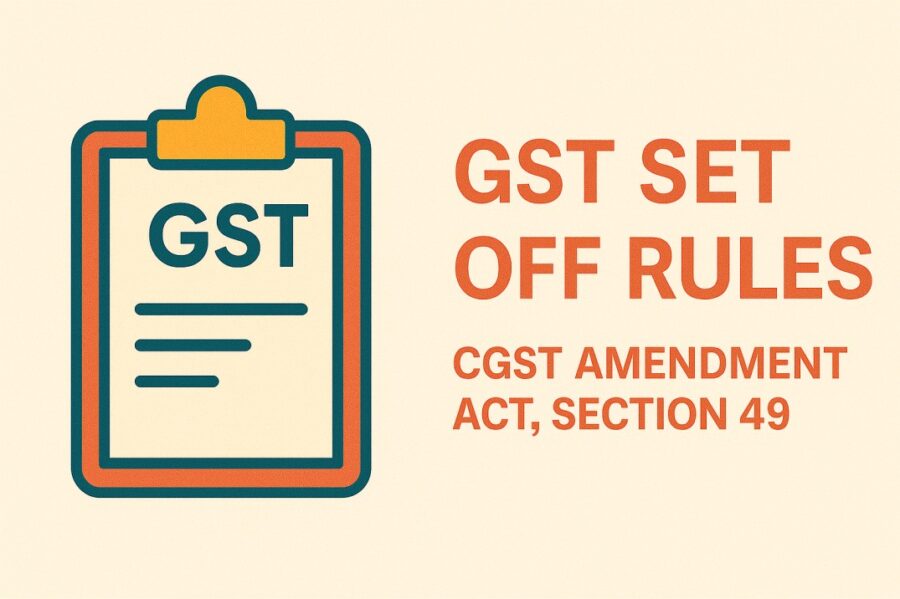
Amendments to Section 49(5) of the CGST Rules of the GST Act (Central Goods and Services Tax Act) impact the business's claim of ITC. Rule 88A requires businesses to claim IGST first in order to pay IGST. The business uses the IGST credit for CGST and SGST only after it has utilized it for IGST on inter-state sales.
As a result, businesses need to track their ITC claims accurately. They need to use IGST credits prior to considering CGST and SGST. This rule makes the Credit availment process easier while ensuring a balance between central government and state governments. It further ensures a healthy cash flow while reducing tax costs under the unified GST regime.
ITC Utilisation Process Under GST
Here is the process to utilise ITC under GST:
- Use your IGST ITC first to pay your IGST bills.
- If there is IGST remaining, use it to pay CGST and SGST.
- Use CGST and SGST ITC to pay CGST and SGST bills.
The following table illustrates the process to utilise ITC:
| Type of ITC | First Utilisation | Second Utilisation | Restrictions |
| IGST ITC | IGST liability | CGST/ IGST liability | IGST ITC must be completely exhausted |
| CGST ITC | IGST liability | CGST liability | Can not be utilised for SGST/ UTGST liability |
| SGST/ UTGST ITC | IGST liability | SGST/ UTGST liability | Can not be utilised for CGST liability |
What Is the Maximum ITC That You Can Use for the Payment of GST?
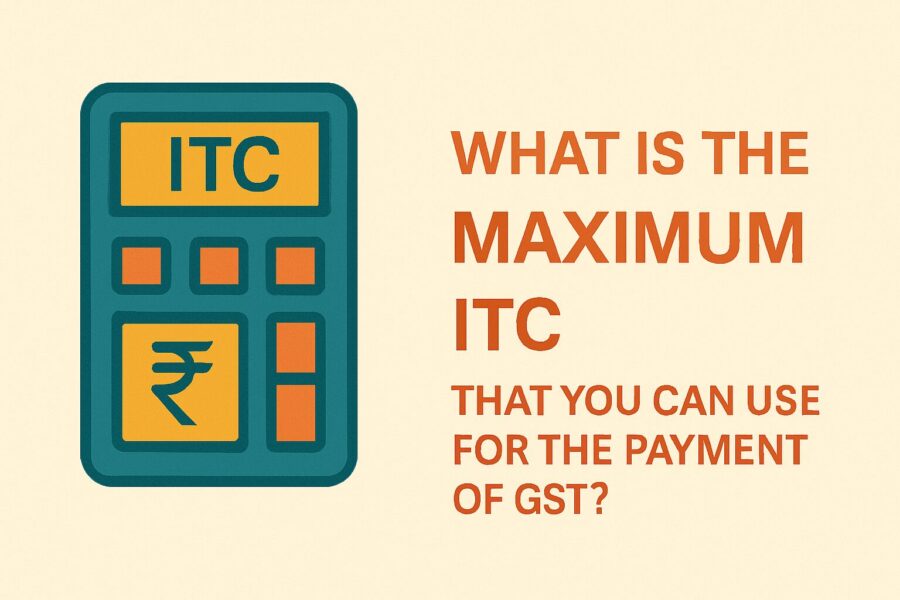
The maximum Input Tax Credit that you can claim depends on the GST you paid during the purchase of goods and services. By utilising ITC, you can offset your outward tax liability lowering your tax burden under the GST System.
Here are the rules that you need to follow while utilising ITC:
- You need to utilise ITC for taxable sales.
- In case you have paid GST for goods and services used for non-business purposes or personal use, you cannot claim ITC.
Ensure you maintain proper invoices to track ITC claims. Your total ITC must not be more than the GST amount for the current tax period. Always reconcile with your records submitted via the GST Portal to ensure consistency in GST returns.
Notably, certain taxpayers cannot utilise ITC credit available in the electronic credit ledger to offset GST Payment liability more than 99% for a given tax period. It indicates that 1% Net Tax Payable needs to be paid in cash. This rule applies to taxpayers having monthly value of taxable supplies exceeding ₹50 lakh (excluding GST Exempted Goods & Services).
Here is the list of taxpayers who are exempted from this specific restriction:
- If a registered taxpayer paid more than ₹1 lakh as income tax in the previous 2 years in belated IT returns for himself, trustee, board, any 2 partners, managing directors or proprietor.
- In case a registered taxpayer received more than ₹1 lakh as refund from unutilised ITC for zero-rated supplies (without payment of tax) or inverted tax structure.
- If a registered taxpayer pays more than 1% of his/ her GST Payment with electronic cash ledger in the present financial year for all tax periods.
- Government departments, local authorities, PSUs, statutory bodies and others.
For complex tax planning or reconciliation under these rules, businesses are advised to seek professional help to ensure compliance and to optimise tax benefits.
Impact of New GST Set-off Rules on Businesses
With the new set-off rules for GST, businesses can enjoy the following benefits:
- Improved cash flow management
- Better tax planning
- Improved financial operation
These changes also align better with the evolving tax practice in India and are a significant step toward simplifying the national indirect tax structure.
Reconciliation and Compliance Requirements

To claim Input Tax Credit on the GST paid, you need to ensure that your invoices match the suppliers' reports, specifically GSTR-3B. You need to compare GSTR-1 and GSTR-3B returns for GST returns compliance. Maintaining accurate data through the GST Portal can help you adhere to Indian tax laws and minimise disputes.
Regular reconciliation under the GST System supports smoother audits and avoids penalties. Staying updated with changes in GST Rates and the GST Act ensures proper utilisation of credits.
Conclusion
GST ITC set off rules mandate claiming IGST ITC before you claim CGST and SGST. Adhering to the GST rules helps you avoid adverse legal consequences. Further, you can manage your cash flow seamlessly with the electronic credit ledger balance.
Ensure you comply with the tax laws to avoid legal implications on your business, and consider periodic review of your tax practice for long-term sustainability.
💡If you want to streamline your payment and make GST payments via credit, debit card or UPI, consider using the PICE App. Explore the PICE App today and take your business to new heights.







